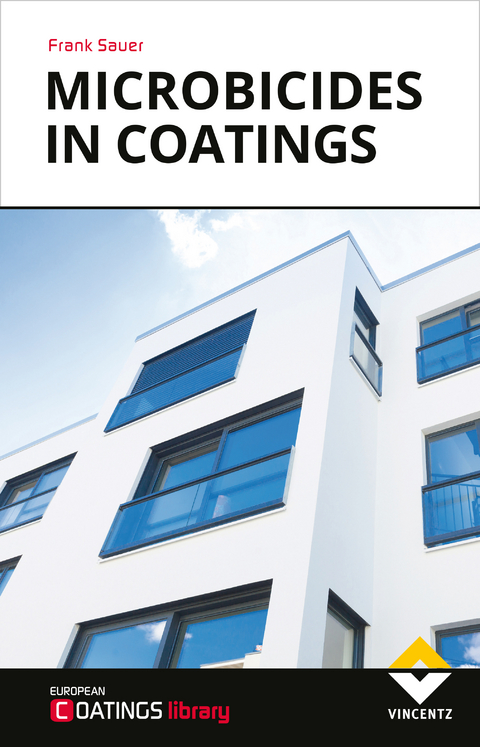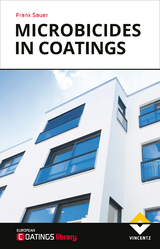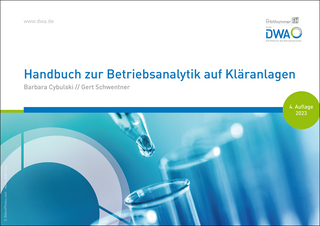Microbicides in Coatings
Vincentz Network (Verlag)
978-3-86630-897-8 (ISBN)
Contents
1 Introduction to microbicides
1.1 Classifi cation of microorganisms
1.1.1 Archaea
1.1.2 Bacteria
1.1.3 Eukaryotes
1.2 Microbicides
1.3 Mode of action of antimicrobial actives
2 Coatings preservation
2.1 In-can preservation
2.1.1 Formaldehyde and formaldehyde-releasing compounds (FA-R)
2.1.2 Isothiazolinone derivatives
2.1.3 Compounds with activated halogens
2.1.4 Summary of relevant properties for in-can preservation
2.2 Dry-fi lm preservation
2.2.1 Fungicides for coatings protection
2.2.2 Algicides for coatings protection
2.2.3 Overview of fungicidal/algicidal product formulations
2.3 Plant hygiene
2.3.1 Prevention is better than cure
2.3.2 Where there is water, there is also life
2.3.3 Ten-point programme: disinfect operational facilities
3 Application aspects
3.1 Service life of microbicides
3.2 Optimisation of dosage
3.3 Formulation aspects
3.4 Remedial surface treatment
3.5 New developments in the fi eld of material protection
3.5.1 Slow-release technology
3.5.2 New actives
3.6 Microbicides based on silver compounds
4 Microbiological and application test methods
4.1 Minimum inhibitory concentration
4.2 Determination of germ count
4.3 In-can challenge test
4.4 Agar diff usion test
4.5 Laboratory leaching tests
4.6 Semi-field leaching trials
4.7 International standards
5 Legislative aspects
5.1 Biocidal Product Legislation (BPR)
5.1.1 General aspects of the authorisation process
5.1.2 Article 95: List of active substances and suppliers
5.1.3 Treated articles
5.2 Interrelationship of the BPR and other legislation
6 Summary and outlook
7 References
Author
Index
Preface “Everyone is trying to accomplish something big, not realising that life is made up of little things.” Frank Clark (1860 – 1936) Microbicides are substances that represent two sides of the same coin. On one hand, they help to control microorganisms that are responsible for the deterioration of materials and for causing commercial damage worth billions of euros a year. On the other, they are regarded with suspicion because their action can have side-effects on humans or on the environment or both. Microorganisms have been part of our biosphere for billions of years, during which time they have been extremely successful due to their ability to adapt to the most challenging of conditions. Human life as we know it would not have been possible without the tireless assistance of these tiny organisms. Our intention must therefore not be to combat germs wherever they are encountered – microbicidal measures should only be taken in situations where germs cause harm to humans, be it out of medical need or the need to protect a material. This book seeks to provide an overview of the different aspects of material protection, covering the spectrum from basic information about the universe of microorganisms, to the innate properties of microbicides, to the state of the art and finally to legislative aspects. The biggest challenge in this regard has been deciding which of the key issues to select from the vast wealth of information available, without straying off course. It therefore goes without saying that it has not been possible to cover every detail in depth, as that would have substantially exceeded the scope of the book. Wherever appropriate, references are provided so that the reader can conduct further research. The book also seeks to familiarise laboratory assistants, technicians, graduates, engineers and chemists with the principles of material protection in the field of coatings. However, it should also prove rewarding to business people with a basic knowledge of chemistry and biology. I would like to thank all those colleagues who provided information on selected topics and proffered their advice and made various suggestions and recommendations. My very special thanks go to my wife and my daughter for their endless patience during the preparation of this book and for their forbearance when I was so often unavailable for leisure pursuits, especially at the final stage of writing. Without their support, this book would not have been finalised in time. I am also greatly indebted to them for giving a reader’s perspective of the book. Langenfeld, May 2017 Frank Sauer
Preface"Everyone is trying to accomplish something big, not realisingthat life is made up of little things."Frank Clark (1860 - 1936)Microbicides are substances that represent two sides of the same coin. On one hand, they help to control microorganisms that are responsible for the deterioration of materials and for causing commercial damage worth billions of euros a year. On the other, they are regarded with suspicion because their action can have side-effects on humans or on the environment or both.Microorganisms have been part of our biosphere for billions of years, during which time they have been extremely successful due to their ability to adapt to the most challenging of conditions. Human life as we know it would not have been possible without the tireless assistance of these tiny organisms. Our intention must therefore not be to combat germs wherever they are encountered - microbicidal measures should only be taken in situations where germs cause harm to humans, be it out of medical need or the need to protect a material.This book seeks to provide an overview of the different aspects of material protection, covering the spectrum from basic information about the universe of microorganisms, to the innate properties of microbicides, to the state of the art and finally to legislative aspects. The biggest challenge in this regard has been deciding which of the key issues to select from the vast wealth of information available, without straying off course. It therefore goes without saying that it has not been possible to cover every detail in depth, as that would have substantially exceeded the scope of the book. Wherever appropriate, references are provided so that the reader can conduct further research.The book also seeks to familiarise laboratory assistants, technicians, graduates, engineers and chemists with the principles of material protection in the field of coatings. However, it should also prove rewarding to business people with a basic knowledge of chemistry and biology.I would like to thank all those colleagues who provided information on selected topics and proffered their advice and made various suggestions and recommendations.My very special thanks go to my wife and my daughter for their endless patience during the preparation of this book and for their forbearance when I was so often unavailable for leisure pursuits, especially at the final stage of writing. Without their support, this book would not have been finalised in time. I am also greatly indebted to them for giving a reader's perspective of the book.Langenfeld, May 2017Frank Sauer
| Erscheinungsdatum | 11.07.2017 |
|---|---|
| Reihe/Serie | European Coatings |
| Zusatzinfo | zahlreiche, auch farbige Abbildungen |
| Verlagsort | Hannover |
| Sprache | englisch |
| Maße | 165 x 260 mm |
| Gewicht | 547 g |
| Einbandart | gebunden |
| Themenwelt | Naturwissenschaften ► Chemie |
| Technik ► Maschinenbau | |
| Schlagworte | Beschichtung • Chemische Technik • Coatings • Eukaryotes • microbicides • Technische Anwendung von Oberflächenbeschichtungen • Technologie, allgemein |
| ISBN-10 | 3-86630-897-3 / 3866308973 |
| ISBN-13 | 978-3-86630-897-8 / 9783866308978 |
| Zustand | Neuware |
| Haben Sie eine Frage zum Produkt? |
aus dem Bereich




